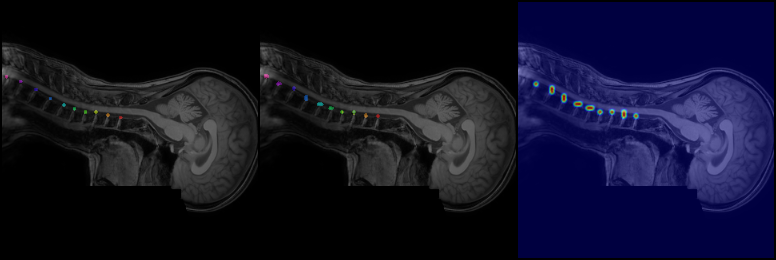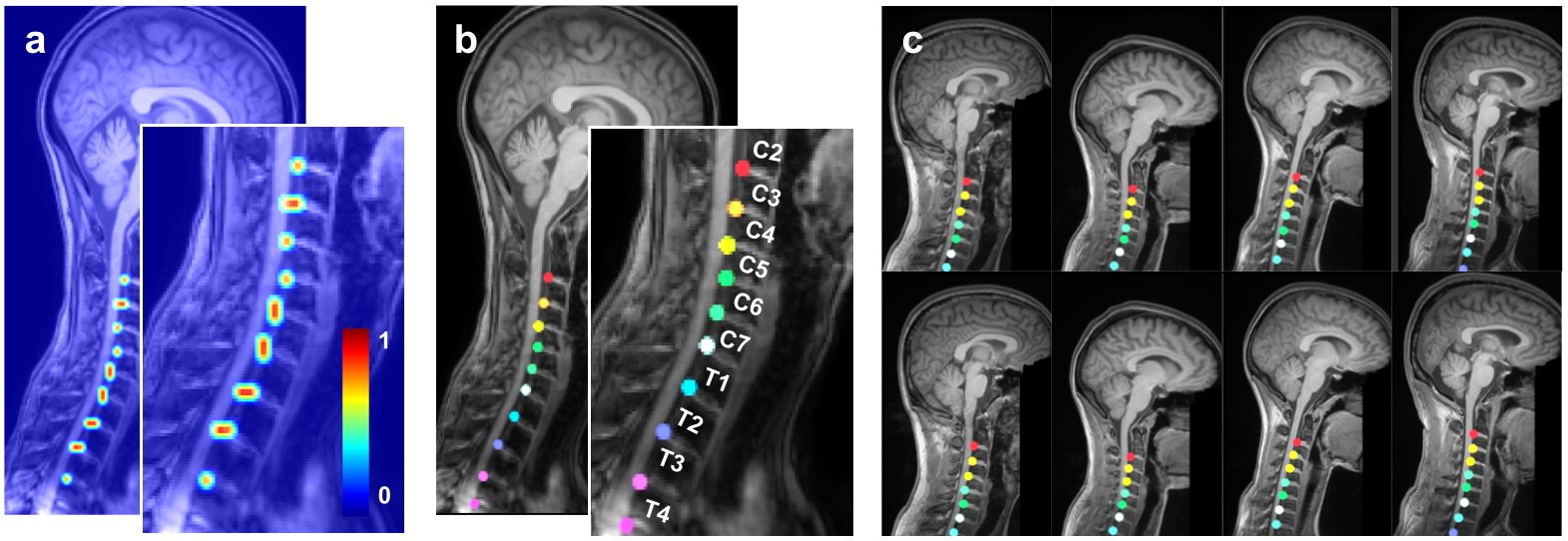Deep-Intervertebral-Disc-Labeling
Stacked Hourglass Network with a Multi-level Attention Mechanism: Where to Look for Intervertebral Disc Labeling
Automatic labeling of the intervertebral disc is a difficult task, due to the many challenges such as complex background, the similarity between discs and bone area in MRI imaging, blurry image, and variation in an imaging modality. Precisely localizing spinal discs plays an important role in intervertebral disc labeling. Most of the literature work consider the semantic intervertebral disc labeling as a post-processing step, which applies on the top of the disc localization algorithm. Hence, the semantic intervertebral labeling highly depends on the disc localization algorithm and mostly fails when the localization algorithm cannot detect discs or falsely detects a background area as a disc. In this work, we aimed to mitigate this problem by reformulating the semantic intervertebral disc labeling using the pose estimation technique. If this code helps with your research please consider citing the following papers:
R. Azad, Lucas Rouhier, and Julien Cohen-Adad "Stacked Hourglass Network with a Multi-level Attention Mechanism: Where to Look for Intervertebral Disc Labeling", MICCAI Workshop, 2021.
Prerequisties and Run
This code has been implemented in python language using Pytorch libarary and tested in ubuntu, though should be compatible with related environment. The required libraries are included in the requiremetns.txt file. Please follow the bellow steps to train and evaluate the model.
1- Download the Spine Generic Public Database (Multi-Subject).
2- Run the create_dataset.py to gather the required data from the Spin Generic dataset.
4- Run prepare_trainset.py to creat the training and validation samples.
Notice: To avoid the above steps we have provided the processed data for all train, validation and test sets here (should be around 150 MB) you can simply download it and continue with the rest steps.
5- Run the main.py to train and evaluate the model. Use the following command with the related arguments to perform the required action:
A- Train and evaluate the model python src/main.py. You can use --att true to use the attention mechanisim.
B- Evaluate the model python src/main.py --evaluate true it will load the trained model and evalute it on the validation set.
C- You can run make_res_gif.py to creat a prediction video using the prediction images generated by main.py for the validation set.
D- You can change the number of stacked hourglass by --stacks argument. For more details check the arguments section in main.py.
6- Run the test.py to evaluate the model on the test set alongside with the metrics.
Quick Overview

Visualzie the attention channel
To extract and show the attention channel for the related input sample, we registered the attention channel by the forward hook. Thus with the following command, you can visualize the input sample, estimated vertebral disc location, and the attention channel.
python src/main.py --evaluate true --attshow true .

Sample of detection result on the test set
Below we illustrated a sample of vertebral disc detection on the test set.

Model weights
You can download the learned weights for each modality in the following table.
| Method | Modality | Learned weights |
|---|---|---|
| Proposed model without attention | T1w | download |
| Proposed model without attention | T2w | download |
| Proposed model with attention | T1w | download |
| Proposed model with attention | T2w | download |
GitHub
https://github.com/rezazad68/Deep-Intervertebral-Disc-Labeling





